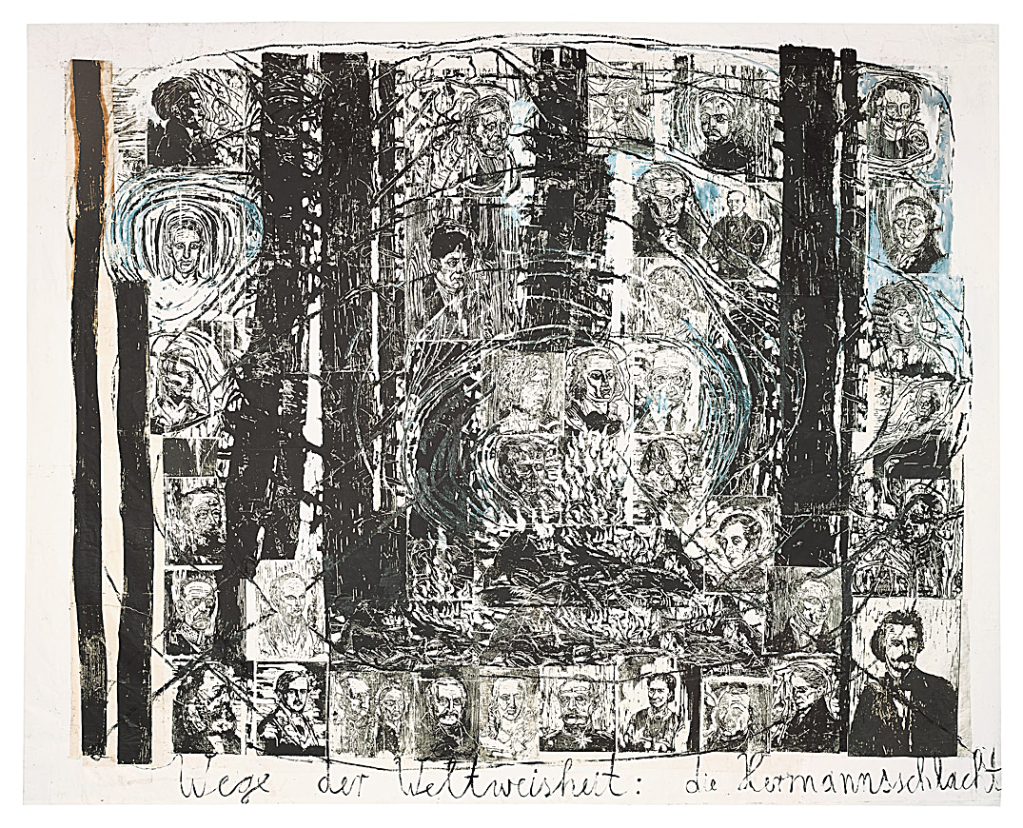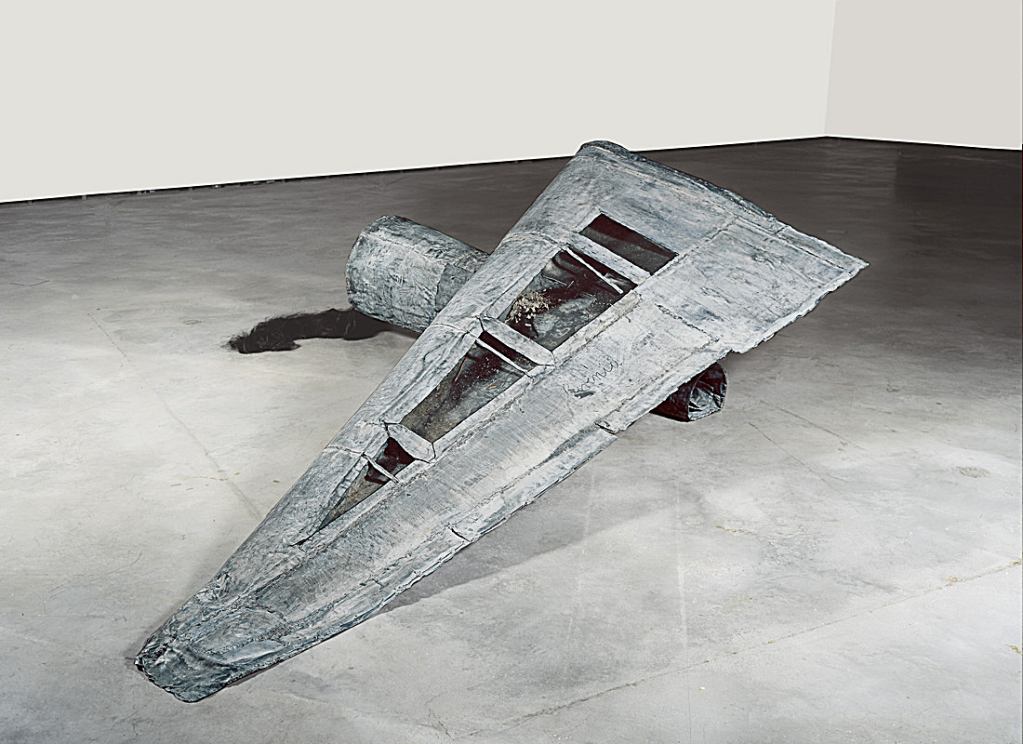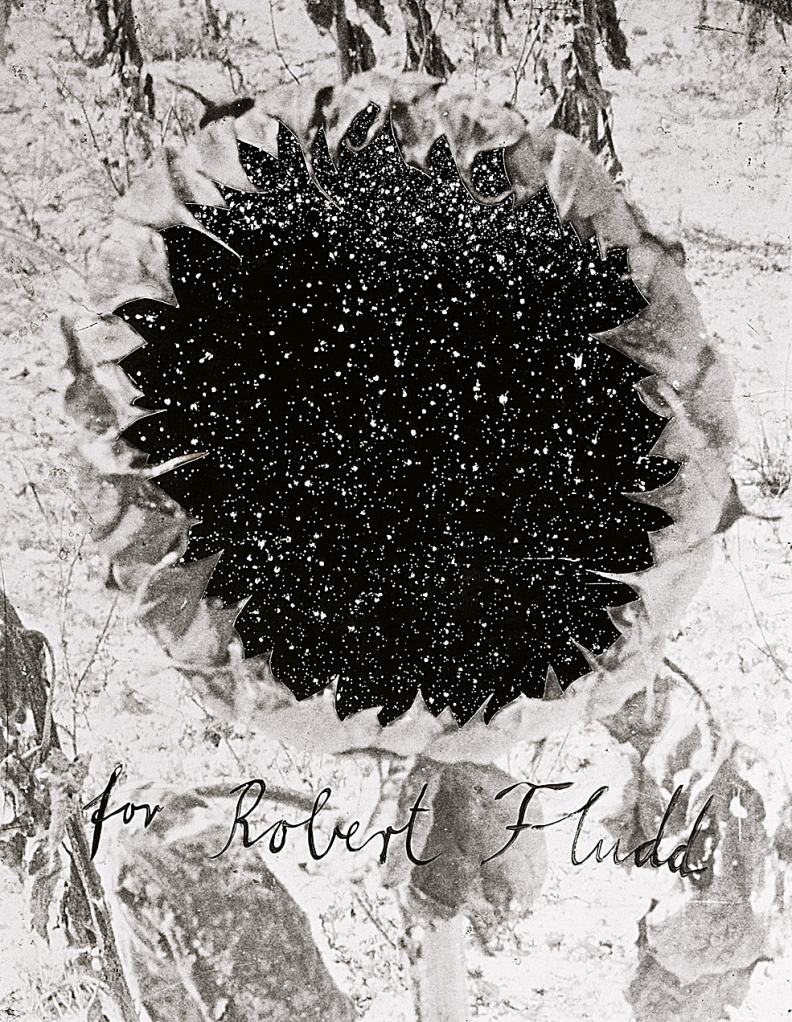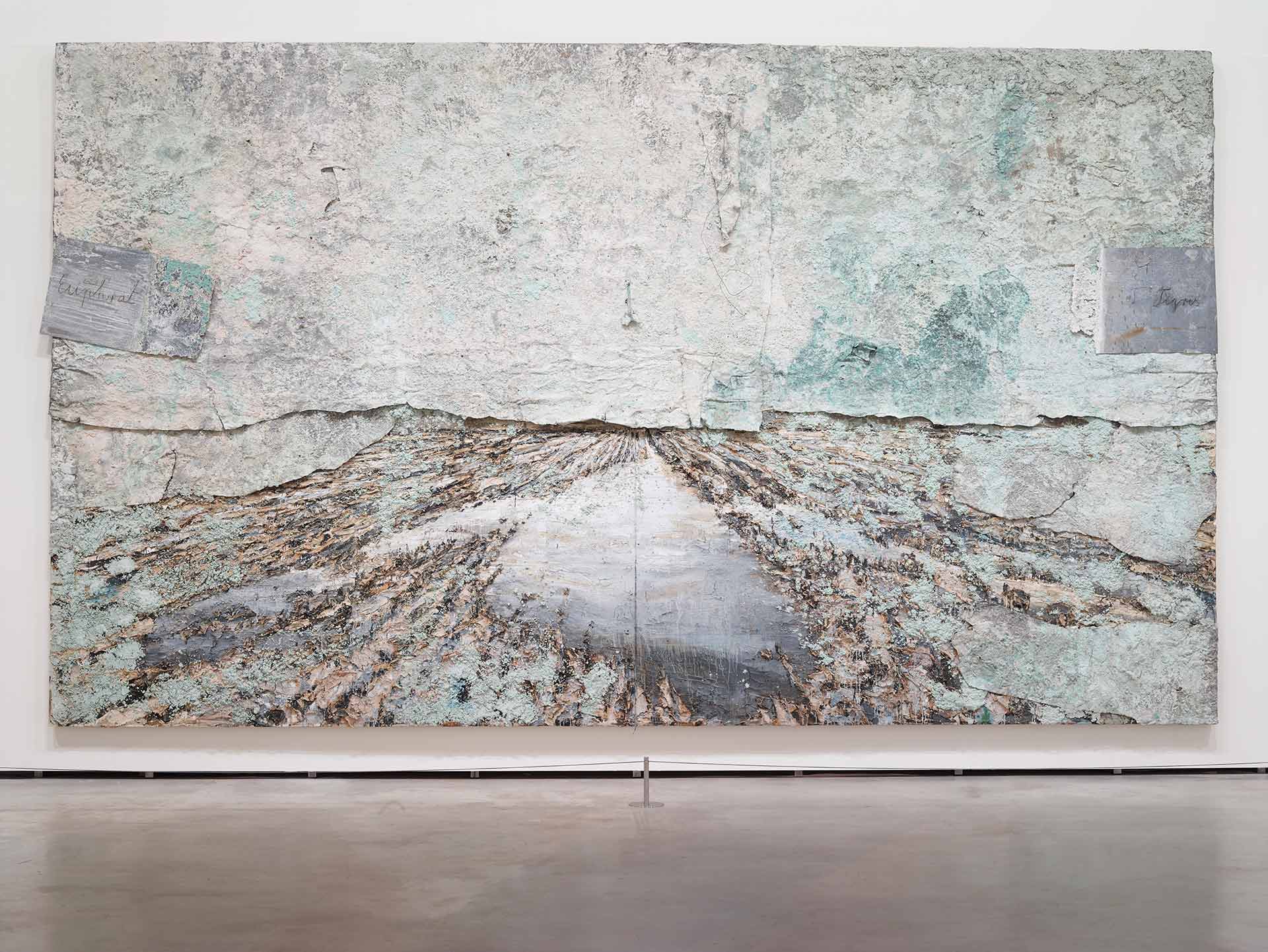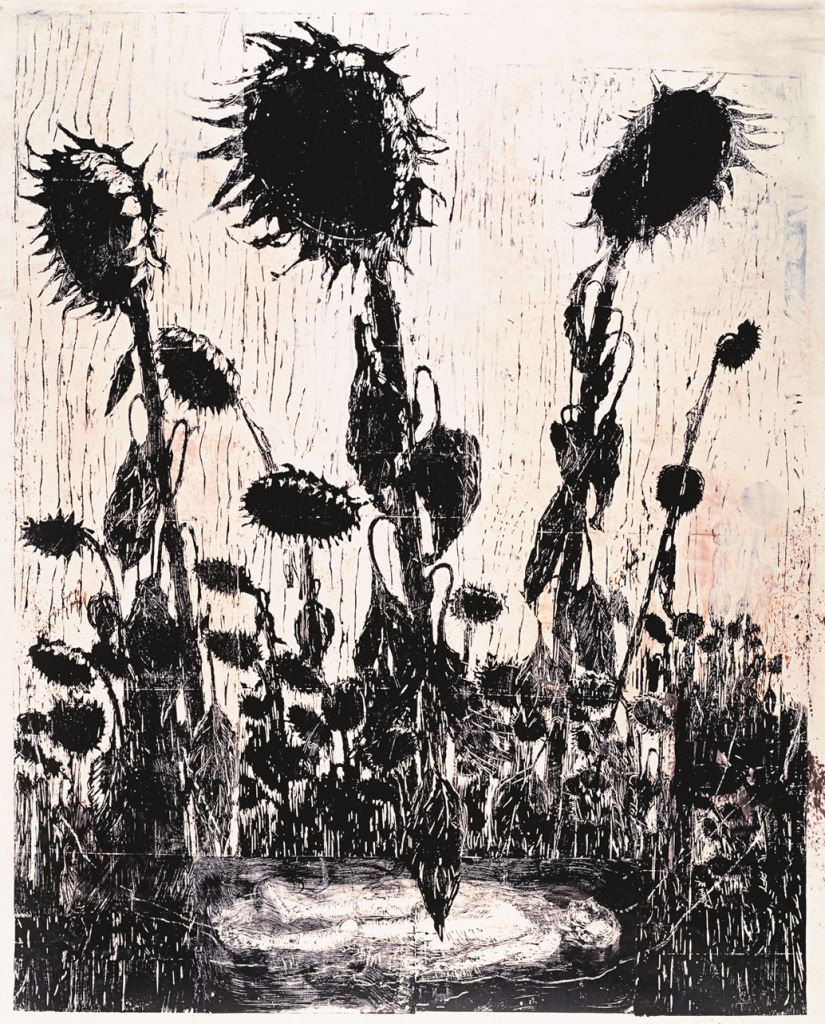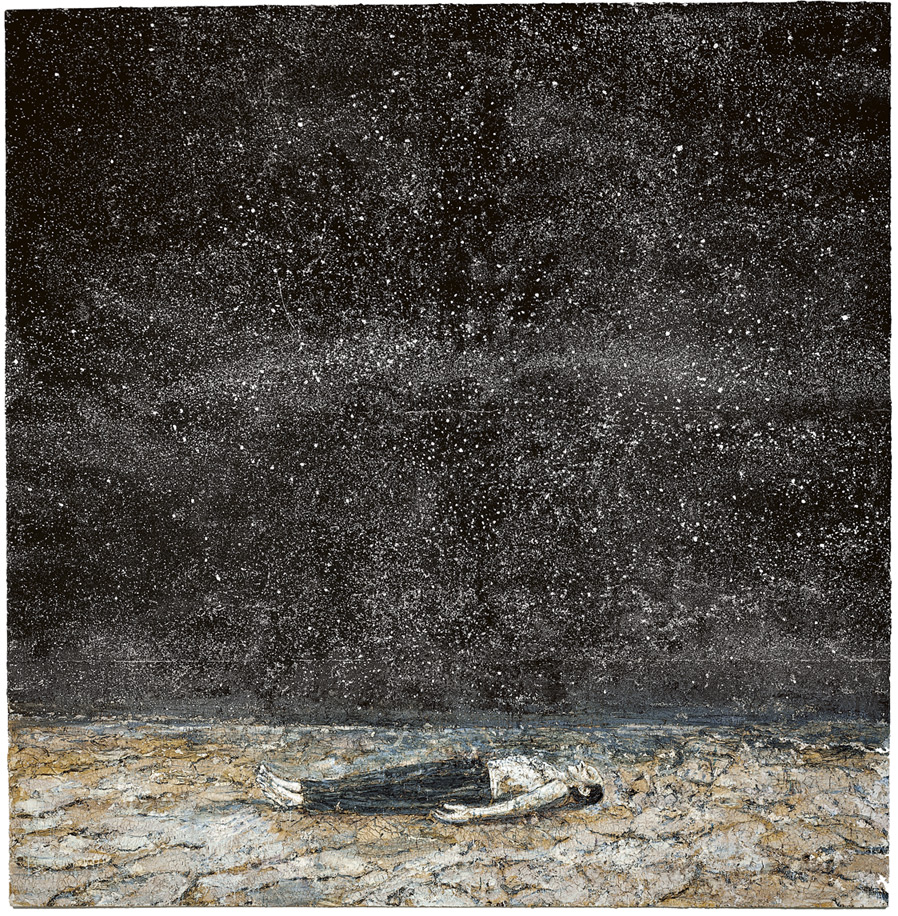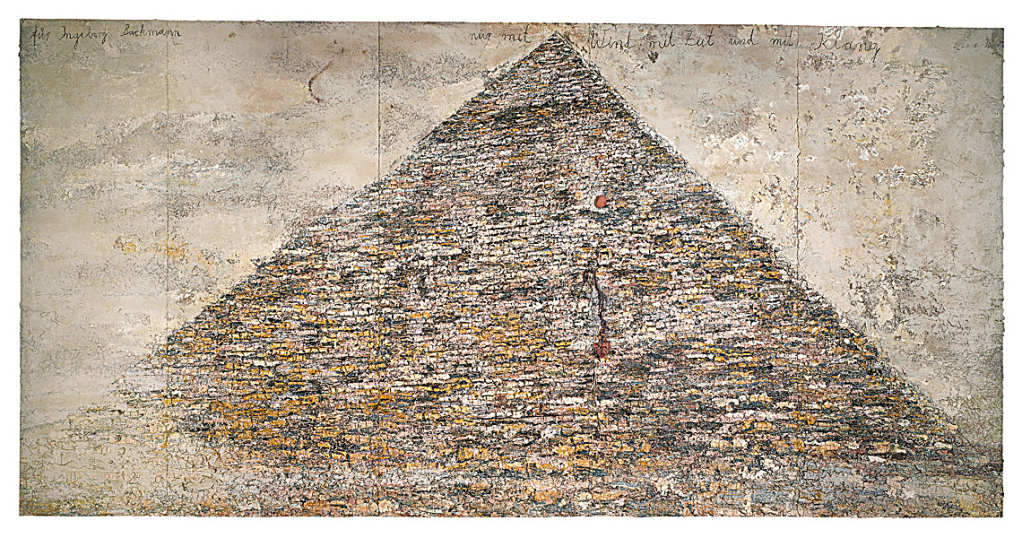Iconoclastic Controversy
1980Shellac on original photograph over cardboard59.5 X 44 X 8.5 cm, 34 pages
Born in Germany just months before the final European battle of World War II, Anselm Kiefer grew up witnessing the results of modern warfare and the division of his homeland. He also experienced the rebuilding of a fragmented nation and its struggle for renewal. Kiefer dedicated himself to investigating the interwoven patterns of German mythology and history and the way they contributed to the rise of Fascism. He confronted these issues by violating aesthetic taboos and resurrecting sublimated icons. In one of his earliest projects, his 1969 Occupations (Besetzungen) series, Kiefer photographed himself mimicking the Nazi salute at various sites during a journey through Switzerland, France, and Italy. Subsequent paintings—immense landscapes and architectural interiors, often encrusted with sand and straw—invoke Germany's literary and political heritage; references abound to the Nibelung legends and Richard Wagner, Albert Speer's architecture, and Adolf Hitler. Beginning in the mid-1980s, and especially following his move to southern France in the early 1990s, Kiefer's iconography expanded to encompass more universal themes of civilization, culture, and spirituality, drawing upon such sources as the Kabbalah, alchemy, and ancient myth.
Artist's books have been one of Kiefer's central means of expression since 1968. Unlike many artist's books, which are typically issued as multiples, Kiefer's books are singular, handmade pieces and, in this sense, more like paintings or sculptures. Iconoclastic Controversy (Bilderstreit, 1980) belongs to a series of paintings and books with the same title, produced between 1977 and 1980, that refer to the conflict that brewed in the Byzantine Empire in the eighth and ninth centuries between iconoclasts, who opposed the worship of religious images, and iconodulists, who advocated it. In the book in the Guggenheim Museum Bilbao collection, Kiefer names several emperors, popes, and patriarchs involved in this conflict. Each name is accompanied by a plus or minus sign, where the plus sign identifies figures who took an iconodulist stance and the minus sign those who positioned themselves as iconoclasts. He also names some figures whose posture remained ambiguous, such as Leo V, whom Kiefer depicts with both signs at once. Additionally, on the fifth page of the book, Kiefer mentions what might be considered the culminating events of the struggle: the Synod of Hiereia (the iconoclast council of 747) and the Council of Nicaea II (the iconodulist council of 787). Kiefer illustrates this ideological battle using images of tanks opening fire on the traditional objects of a painter's studio. Mark Rosenthal has suggested that Kiefer's resuscitation of the dispute over icons might be understood in relation to the contemporary debate over the use of photography as an art medium.[1]
1. Mark Rosenthal, Anselm Kiefer, exh cat. (Chicago: Art Institute of Chicago; Philadelphia: Philadelphia Museum of Art, 1987), p. 76.
Source(s):
Nancy Spector. "Anselm Kiefer." In Spector, ed. Guggenheim Museum Collection: A to Z. 3rd rev. ed. New York: Guggenheim Museum, 2009.
Miguel López-Remiro. "Anselm Kiefer." In Guggenheim Museum Bilbao Collection. Bilbao: Guggenheim Museum Bilbao; Madrid: TF Editores, 2009.
"Anselm Kiefer." In The Permanent Collections of the Guggenheim Museums. Bilbao: Guggenheim Museum Bilbao, 2007.
Original title
Bilderstreit
Date
1980
Medium/Materials
Shellac on original photograph over cardboard
Dimensions
59.5 X 44 X 8.5 cm, 34 pages
Credit line
Guggenheim Bilbao Museoa


